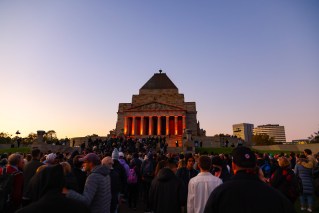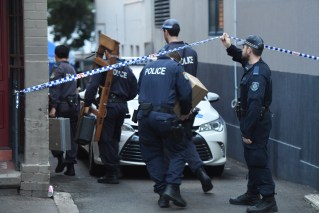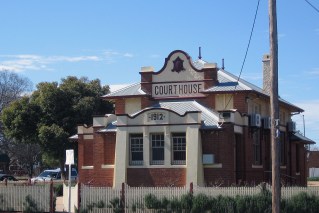NATO has agreed on a new strategic concept that describes Russia as “the most significant and direct threat to allies’ security and stability”.
On Wednesday the alliance also formally invited Finland and Sweden to be members, a day after a historic deal in which Turkey dropped its objections to the two nations joining.
The memberships show Russian President Vladimir Putin that his efforts to weaken NATO are failing and have actually instead further inspired the two neutral countries to join the alliance.
“As NATO allies, Finland and Sweden commit to fully support Turkey against threats to its national security,” secretary general Jens Stoltenberg said.
Meanwhile, more American soldiers will be sent to Europe in a show of force against the Kremlin.
US warships will go to Spain, fighter jet squadrons to Britain, ground troops to Romania, air defence units to Germany and Italy and a wide range of assets to the Baltics.
Tweet from @NATO
“We’re sending an unmistakable message … that NATO is strong, united and the steps we’re taking during this summit are going to further augment our collective strength,” US President Joe Biden said.
US officials declined to provide details on exactly how many additional personnel would be sent to Europe.
The US military has already sent some 20,000 extra personnel on the continent since Russia’s invasion of Ukraine on February 24, bringing the total to about 100,000.
A permanent US Army headquarters in Poland would be accompanied by a field support battalion – the first permanent US contingent on NATO’s eastern flank, officials said.
NATO’s strategic concepts
In 2010, when leaders agreed the alliance’s last master document setting out its vision for NATO, they aimed to build a long-term partnership with their old Cold War adversary.
Dmitry Medvedev, Russia’s president at the time, was at the Lisbon summit where it was agreed.
China was not even mentioned in the 2010 strategy, seen at the time in the West as a benign trading partner and manufacturing base.
It is now described as a challenge to NATO’s “interests, security and values”, as an economic and military power that remains “opaque about its strategy, intentions and military build-up”.
The following is a list of NATO’s new positions as cited in the 10-page strategic concept, as well as an explanation of what role these concepts play for the alliance.
The strategic concept sets the alliance’s areas of focus and is updated roughly once a decade.
The document, which is made public, gives guidance that is then translated into political and military action.
NATO’s last strategic concept was drafted when the alliance was engaged in a US-led fight against Taliban militants and democracy-building mission in Afghanistan.
It was four years before Russia’s annexation of Crimea in 2014, which triggered a return for NATO to its roots of collective defence rather than “out of area” crisis management beyond its borders.
A 2022 concept has been long overdue.
Diplomats and officials said the alliance did not dare formulate a fresh strategy while US president Donald Trump, a NATO critic who threatened to leave the alliance in 2018, was in office.
Russia
The new strategic concept document accuses Russia of seeking “to establish spheres of influence and direct control through coercion, subversion, aggression and annexation”.
NATO says Moscow applies conventional military, cyber and hybrid means to reach these goals.
“Moscow’s military build-up, including in the Baltic, Black and Mediterranean Sea regions, along with its military integration with Belarus, challenge our security and interests”, the strategic concept says.
It also expresses concern over modernisation of Russia’s nuclear forces, Moscow’s threats to use nuclear weapons and development of “novel and disruptive dual-capable delivery systems”, a reference to the development of hypersonic weapons that can carry conventional and nuclear war heads.
Russia accuses NATO of threatening European security by expanding eastwards since the mid-1990s.
In response to Russia’s moves, NATO will significantly strengthen its deterrence and defence, the document says, while stressing that the alliance does not seek confrontation with Moscow, instead seeking dialogue.
“We remain willing to keep open channels of communication with Moscow to manage and mitigate risks, prevent escalation and increase transparency,” the strategic concept says.
China
China is mentioned for the first time in NATO’s strategic concept.
Beijing’s “stated ambitions and coercive policies challenge our interests, security and values”, the document says.
The concept accuses China of using malicious hybrid and cyber operations, confrontational rhetoric and disinformation to target NATO allies and harm NATO’s security.
China denies any such tactics.
The document also touches upon China’s economic ambitions, stating Beijing was seeking to control key technological and industrial sectors, critical infrastructure, and strategic materials and supply chains.
Tweet from @NATOpress
“It uses its economic leverage to create strategic dependencies and enhance its influence,” the concept says.
“It strives to subvert the rules-based international order, including in the space, cyber and maritime domains.”
It also expresses concern over closer ties between Moscow and Beijing that are “mutually reinforcing attempts to undercut the rules-based international order”.
NATO says it will remain open to constructive engagement with China but also boost awareness and enhance its preparedness against Beijing’s “coercive tactics and efforts to divide the alliance”.
-with AAP









